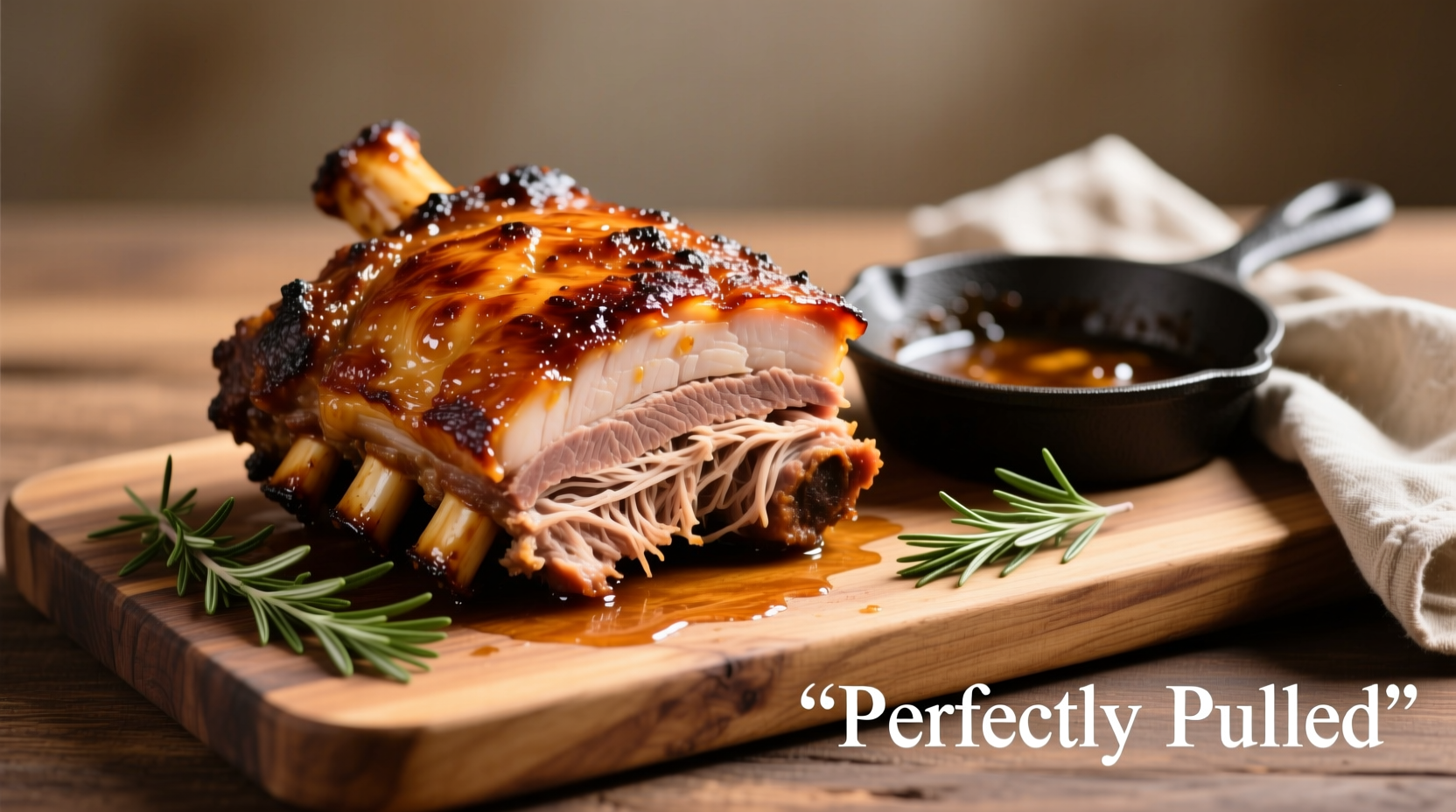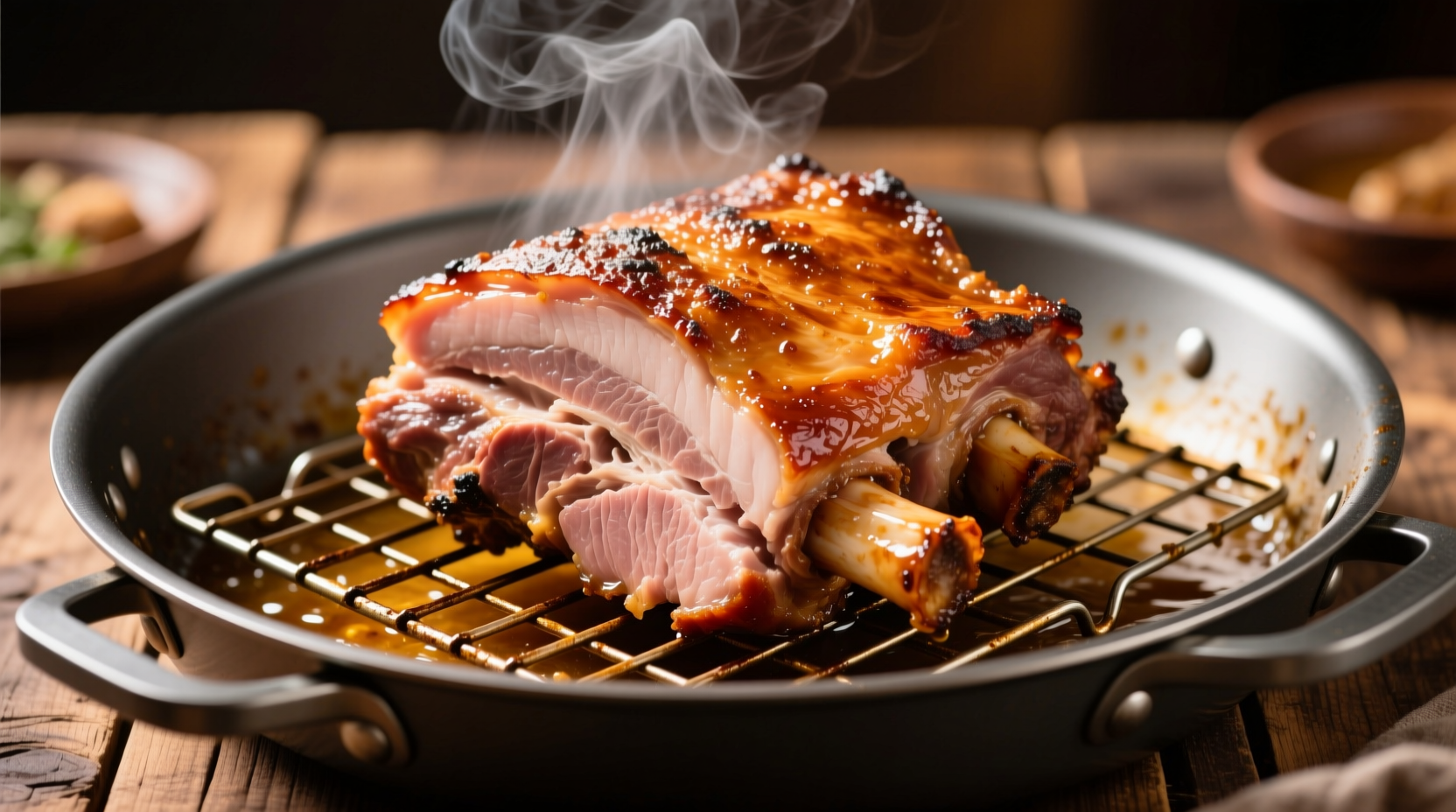Getting perfectly tender pulled pork starts with understanding the science behind slow roasting. At 350°F, pork shoulder transforms from tough connective tissue to succulent, pull-apart perfection through a process called collagen breakdown. This temperature strikes the ideal balance between cooking efficiency and texture development—hot enough to render fat properly but not so high that it dries out the meat.
Why 350°F Is the Sweet Spot for Pork Shoulder
While lower temperatures (225-275°F) work for traditional smoking, 350°F offers a practical middle ground for home ovens. This temperature:
- Completes cooking in a reasonable timeframe (4-6 hours for most cuts)
- Creates proper Maillard reaction for flavorful crust development
- Maintains moisture while breaking down collagen
- Works effectively in standard home ovens without special equipment
According to USDA Food Safety guidelines, pork should reach a minimum internal temperature of 145°F for safety, but shoulder requires higher temperatures (195-205°F) to properly break down connective tissues. The National Pork Board confirms that collagen conversion begins around 160°F and completes between 195-205°F, which is essential for that signature pulled texture.
Precise Cooking Time Calculation
While general timing provides a framework, several factors affect your specific cooking duration. Use this formula as your starting point:
| Pork Shoulder Weight | Approximate Cooking Time at 350°F | Minimum Internal Temperature |
|---|---|---|
| 3-4 lbs | 2-3 hours | 195-205°F |
| 5-6 lbs | 3-4.5 hours | 195-205°F |
| 7-8 lbs | 4.5-6 hours | 195-205°F |
| 9-10 lbs | 6-7.5 hours | 195-205°F |
This chart represents standard cooking times for fresh, boneless pork shoulder at 350°F. Remember these critical variables that affect timing:
- Bone-in vs. boneless: Bone-in shoulders take 10-15% longer to cook
- Starting temperature: Refrigerated meat adds 20-30 minutes vs. room temperature
- Oven accuracy: Use an independent oven thermometer for precise temperature
- Pan type: Dark metal pans cook slightly faster than glass or ceramic
Step-by-Step Cooking Process
Follow these professional-tested steps for foolproof results:
Preparation (15 minutes)
- Remove pork shoulder from refrigerator 30-60 minutes before cooking
- Pat dry thoroughly with paper towels (critical for proper browning)
- Apply your preferred rub evenly across all surfaces
- Place meat fat-side up in roasting pan or Dutch oven
Cooking Phase (4-6 hours)
- Preheat oven to 350°F with rack in center position
- Place pork in oven and set timer for 30 minutes per pound
- After first hour, reduce heat to 325°F if exterior browns too quickly
- Baste with pan juices every 60-90 minutes for added moisture
- Monitor internal temperature starting at 75% of estimated cooking time

How to Verify Perfect Doneness
Timing alone isn't sufficient—proper doneness requires multiple verification methods:
Temperature Check (Most Reliable)
Insert a digital thermometer into the thickest part, avoiding bone:
- 195°F: Minimum temperature for shreddable texture
- 200°F: Ideal range for clean separation with forks
- 205°F: Maximum recommended temperature before drying begins
Physical Tests (Secondary Verification)
Supplement temperature readings with these hands-on tests:
- Fork test: Fork should slide in and out with almost no resistance
- Probe test: Meat thermometer probe should slide in like soft butter
- Shrinkage: Should have reduced by about 25% from original size
- Juices: Clear, not pink, when pierced deeply
Critical Resting Period
Never skip this essential step—resting transforms good pulled pork into exceptional results:
- Remove pork from oven when it reaches 195-205°F
- Transfer to cutting board and tent loosely with foil
- Rest for 30-60 minutes (time increases with size)
- During resting, internal temperature will rise 5-10°F
- Juices redistribute throughout the meat, preventing dryness
Food science explains why resting matters: the residual heat continues collagen breakdown while muscle fibers relax, allowing juices to redistribute. Skipping this step causes up to 30% more moisture loss when carving.
Troubleshooting Common Issues
Even with precise timing, challenges may arise. Here's how to handle them:
Problem: Pork is cooking too quickly
Solution: Reduce oven temperature by 25°F and monitor closely. If already near target temperature, remove from oven and let residual heat finish the process while resting.
Problem: Pork isn't reaching proper tenderness
Solution: Return to oven and continue cooking in 30-minute increments, checking temperature and texture each time. Most undercooked situations require 1-2 additional hours at 350°F.
Problem: Exterior is browning too fast
Solution: Tent loosely with foil or reduce temperature to 325°F. For extreme cases, wrap completely in foil for the remainder of cooking time.
Pro Tips for Perfect Pulled Pork
- Apply rub 12-24 hours before cooking for deeper flavor penetration
- Add ½ cup liquid (apple juice, broth, or vinegar) to bottom of pan for moisture
- Use a wireless thermometer for continuous monitoring without opening oven
- For extra crispy exterior, increase temperature to 400°F for final 15 minutes
- Save pan drippings for au jus or flavoring your pulled pork











 浙公网安备
33010002000092号
浙公网安备
33010002000092号 浙B2-20120091-4
浙B2-20120091-4